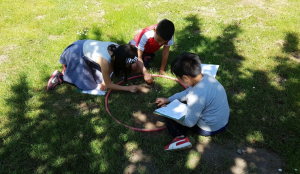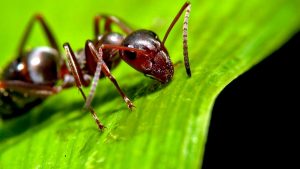 This is a science unit I collaborated on in various versions with three different classes ranging from Grades 1 to 3. The idea was to get the students, working independently or in small groups, to start making connections between information they learn from books and what they experience in the real world, with the aim of helping them to understand research as a recurring cycle of activities–talking and asking questions, reading and doing research, looking at the actual world, and communicating what they’ve learned.
This is a science unit I collaborated on in various versions with three different classes ranging from Grades 1 to 3. The idea was to get the students, working independently or in small groups, to start making connections between information they learn from books and what they experience in the real world, with the aim of helping them to understand research as a recurring cycle of activities–talking and asking questions, reading and doing research, looking at the actual world, and communicating what they’ve learned.
The project was about  investigating five types of bugs—spiders, ants, beetles, wood bugs and centipedes—and learning about their roles in local ecosystems.
investigating five types of bugs—spiders, ants, beetles, wood bugs and centipedes—and learning about their roles in local ecosystems.
Below are several slides describing the research process as we used it: Talking, Reading, Looking, and Writing. There is also information about the different levels of support provided in inquiry based projects, and about the roles of the classroom teacher and the teacher-librarian.
The embedded hotspots on each image provide more information on relevant points. Just hover and click to read more. If you click on the ‘Full Screen’ icon in the right corner of each image, use the ‘Escape’ button to exit full screen mode and return to the post. And when you’re done reading the post, click the ‘Back’ button on your browser to return to the blog Mainpage.
Talking is one of the most important parts of any learning project. As they proceed with their inquiries, students practice many different ways of talking: this brainstorming activity, discussions with their partners and table groups, and oral presentations of their findings are just some of them.
A conversation with a student:
Student: Spiders are gross. I don’t like them. I don’t want to know this.
Me: Maybe that’s how little kids talk about spiders. Do you think that’s how researchers would talk about them, though?
Student: But I AM a little kid.
Me: Well couldn’t you be both? A little kid AND a researcher?
When students have a clear understanding of what they are supposed to be doing and how they should go about doing it, they are focused and engaged.
Throughout this project, students switched effortlessly between the various kinds of writing they needed to do: making research notes, recording field observations, and writing up their findings in paragraph form.
This is a description of the kinds of activities involved in the different stages of the inquiry.
Students need to build up their stamina for engaging in inquiry-based learning. As they do this, the amount of support they need varies. Ideally, they get the level of support they need at each of the stages.
This is a rough breakdown of the way we divided the work.
Here are some links to the new BC Ministry of Education curriculum.
Click here to go back to the blog Mainpage.